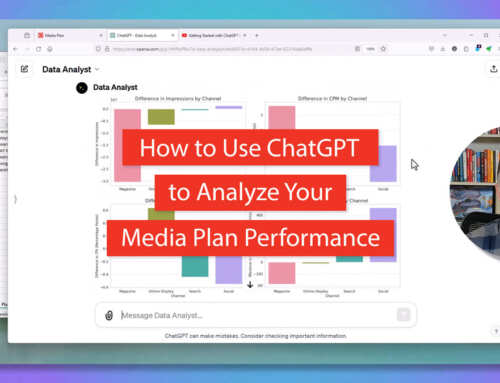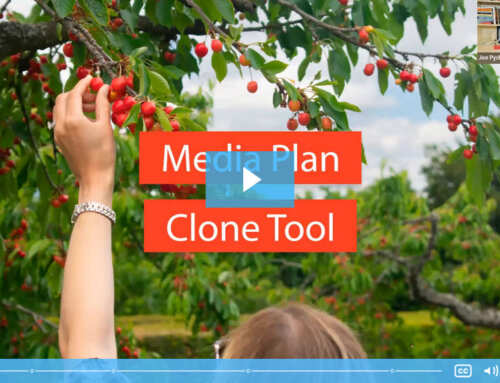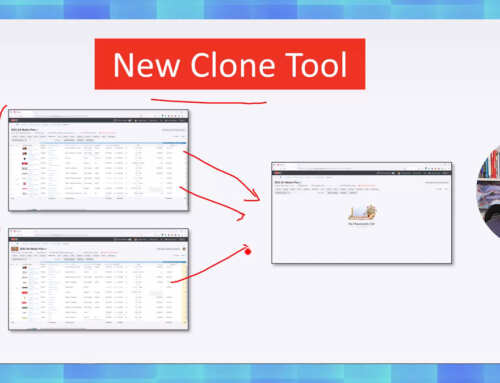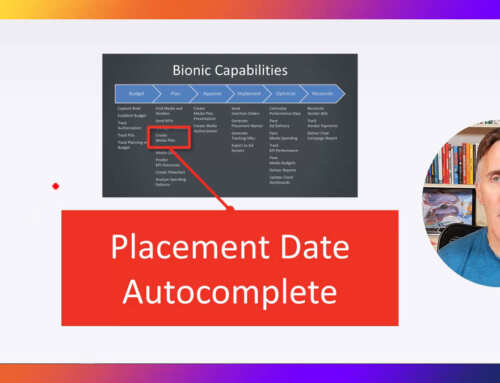Within hours of installing Bionic Marketing Performance Management, Publitek’s Vicki Parker noticed a major advertising delivery problem that could have otherwise gone unnoticed for weeks.
She saw an “angry face” emoji and instantly knew there was big trouble with the placement.
After clicking the warning and inspecting the delivery details, she quickly diagnosed the problem, notified the publisher, fixed it, and kept a mistake from turning into an expense.
In her client’s eyes, Vicki is a superhero. I think she’s the Bionic Woman.
Meet Vicki Parker and Publitek
Publitek, headquartered in Bath, UK, is the world’s leading B2B content marketing and PR agency for the electronics industry.
Vicki Parker is their Director of Finance and Media Operations. Vicki joined Publitek in 1999 as the company’s first employee, after 3 years in market research data analysis. Today, she manages global media planning and media buying for Publitek clients, using both online and print outlets. Vicki also has overall responsibility for the financial management and the company’s office administration.
I recently had the good fortune of chatting with Vicki. She shared her expertise on a few really important topics. Namely, preventing failure and mistakes, why centralization leads to better quality, and how to measure and communicate results in a way that leads to happier clients. Not to mention, how to achieve these objectives in record time.
Q: What was your biggest challenge with the way media planning was getting done?
Our biggest challenge was lack of consistency.
We have an increasing number of clients looking for support with media planning and they all have different requirements. We have one client who can have up to 15 plans running at any one time, whereas for others, we tend to do one plan for the year and adjust it on an ongoing basis.
The reality is they all want different things when it comes to reporting. Some just want to see what they’ve booked and are content with a simple spreadsheet, some want a PowerPoint presentation of results, and some want to see all of their allocations by country, region or division.
Another issue we faced was that our ad server does not tell us if we’re short on results – it tells us what we’ve delivered, but it doesn’t measure it against the plan without additional cross-platform work. This is all something that really can involve a tremendous amount of time if you don’t have a solution – and with anything client facing, the details have to be 100% correct or the client would lose trust in us.
Q: What has gotten better and why? Tell me about preventing failures and mistakes. And consistency.
Consistency is a major initiative for us – and it’s a big part of keeping our clients happy. They need to see work from us the same way, over and over – and it saves them time when they know what to expect.
We didn’t have an overall clear picture of planning across all of our clients, and it wasn’t easy to quickly show a client what we are doing and why.
As far as swimming in a sea of spreadsheets, anyone involved in this business understands that what happens with mistakes is you change one thing on a particular spreadsheet, and because it takes 10-15 spreadsheets to get a comprehensive plan proposed, approved, and executed, if you make a single mistake, it is like that mistake has gone to the bottom of the ocean – and you have to start all over.
There are so many details, and all of them are incredibly important to making a quality media plan, getting it done right, and getting it executed. With our growing client base, we couldn’t continue trying to manage this whilst having all of this critical information in so many different spreadsheets and formats.
On the topic of consistency, when we hire someone new, we want them to be working in the same way we do, with a minimum of training. That’s not easy when you are taking someone who is new to the company, and showing them what has to be done for each campaign, and using 10-15 spreadsheets ultimately to get the job done. It’s almost like setting someone new up for failure.
We can now train everyone on the Bionic for Agencies system and even get help from the Bionic team when needed.
What was happening before was we were drowning in a sea of spreadsheets and trying to keep everything straight required superhuman efforts. Now that we have Bionic, there are a lot of positive changes for us.
Q: So how did you save the day? What happened?
We can immediately see if a campaign we’re running is going to be short on results.
The system pulls in the data daily from our ad server and measures what’s happening against our goals for that particular client.
We had an issue recently with one of our publishers where an ad wasn’t delivering the impressions we’d booked – which we noticed straight away when logging into Bionic. We saw a red angry face next to the metrics for that campaign. We were able to contact the publisher, get it fixed immediately – and avoid having the problem linger for a month or more, which can turn a mistake into an expense.
A major benefit is that our clients are really excited by this and the way it reflects the results! We can just show them exactly what’s happening and they love it. Before, this would have entailed a phenomenal amount of work in excel – and now it’s just done.
Q: Why does keeping everything in one place make a difference in quality?
The next really positive change is that everything is now in one place.
We needed to totally centralize how we are doing this, and stop having to go to so many different places. We needed a solution that would deal with this from beginning to end, not just for one part of the process. We have to do less to accomplish what we’re actually trying to achieve.
It’s easier to manage detail with accuracy because it’s all in one place, and the system is built to handle complex calculations. In media planning, errors are very, very easy to make – we’re human, but with Bionic, it’s easy to find them and fix them, and fix them quickly – I’m not digging through spreadsheet after spreadsheet to see what went wrong – it’s just right there.
The number one reason Publitek installed Bionic was we needed a clear, consistent picture of planning – it’s easy to find these details, it’s easy to communicate this information to clients, we don’t lose anything, and it really prevents mistakes. We were drowning in a sea of spreadsheets before – now we are surfing on waves of efficiency.
With clients, they are really excited by the views we can show them of their campaign performance – they can see exactly what’s happening, how much the cost per click is, and it’s just really fast and easy to understand. They also love being able to easily see the allocations they want to see – which countries they’re spending their money in, in which ad units, and it’s important for them to be able to see overall how the money is being spent.
Here’s what I learned from Vicki
A single missed detail in advertising can snowball into a catastrophe. At worst, it costs you a client relationship. At best, it wastes hours of your time. It always costs money.
By centralizing her media planning and advertising performance data, Publitek’s Vicki Parker delivers superior service and results to her clients. It’s no wonder why Publitek is the leader in their field. They truly are superheroes in advertising for the electronics industry.
For more information
To learn more about Publitek and its advertising agency services, go to: http://www.publitek.com/services/media-planning-buying/
To learn more about Bionic Advertising Systems and its software for media planning and marketing performance management, go to: https://bionic-ads.com/





